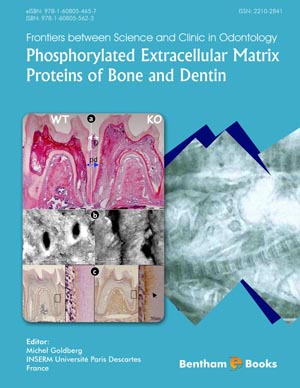Abstract
Dentin sialophosphoprotein (DSPP) cleavage products are the most abundant non-collagenous proteins in dentin. Among the genes encoding the dentin noncollagenous proteins, only mutations in DSPP are known to cause inherited dental malformations. Characterization of DSPP-derived protein from developing porcine teeth has allowed a better understanding of DSPP structure and function, which has provided important insights into how dentin biomineralization might be controlled. Porcine DSPP is a chimera of three structural domains: dentin sialoprotein (DSP), dentin glycoprotein (DGP) and dentin phosphoprotein (DPP). DSPP is expressed by odontoblasts and is rapidly processed after its secretion by BMP1 to generate DPP. Following this initial processing, DSPP-derived proteins are further processed by matrix metalloproteinases (MMP20 and MMP2) into DSP and DGP. DSP has a heavily N-glycosylated, sialylated N-terminal domain and a C-terminal domain with two glycosaminoglycan attachments, three potential O-glycosylations, and three potential phosphoserines. DGP is a phosphorylated glycoprotein that has an affinity for hydroxyapatite, while DPP is a highly phosphorylated intrinsically disordered protein with extensive length polymorphisms resulted from genetic heterogeneity.
Keywords: DSPP, biomineralizations, dentin sialoprotein, dentin glycoprotein, dentin phosphoprotein, DSPP derived proteins, proteolytic cleavage, BMP1, MMP20, N-terminal, C-terminal, O-glycosylations, phosphoserines, polymorphisms, biomineralizations.






















